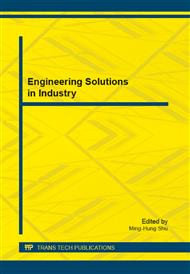p.19
p.23
p.29
p.33
p.43
p.47
p.51
p.57
p.61
Error Compensation Based on Lagrange Multiplier in Heterodyne Laser Interferometer
Abstract:
In this paper, we propose a signal compensation algorithm. In heterodyne laser interferometer, the unexpected error restricts the precision such as nonlinearity and environmental error. To improve the accuracy in length measurement, we use the method of Lagrange multiplier which solves the constrained optimization problem and allows to minimize an objective function. With the method of Lagrange, we apply it to a length measurement and show the result of simulation.
Info:
Periodical:
Pages:
43-46
Citation:
Online since:
October 2014
Authors:
Price:
Сopyright:
© 2014 Trans Tech Publications Ltd. All Rights Reserved
Share:
Citation:


